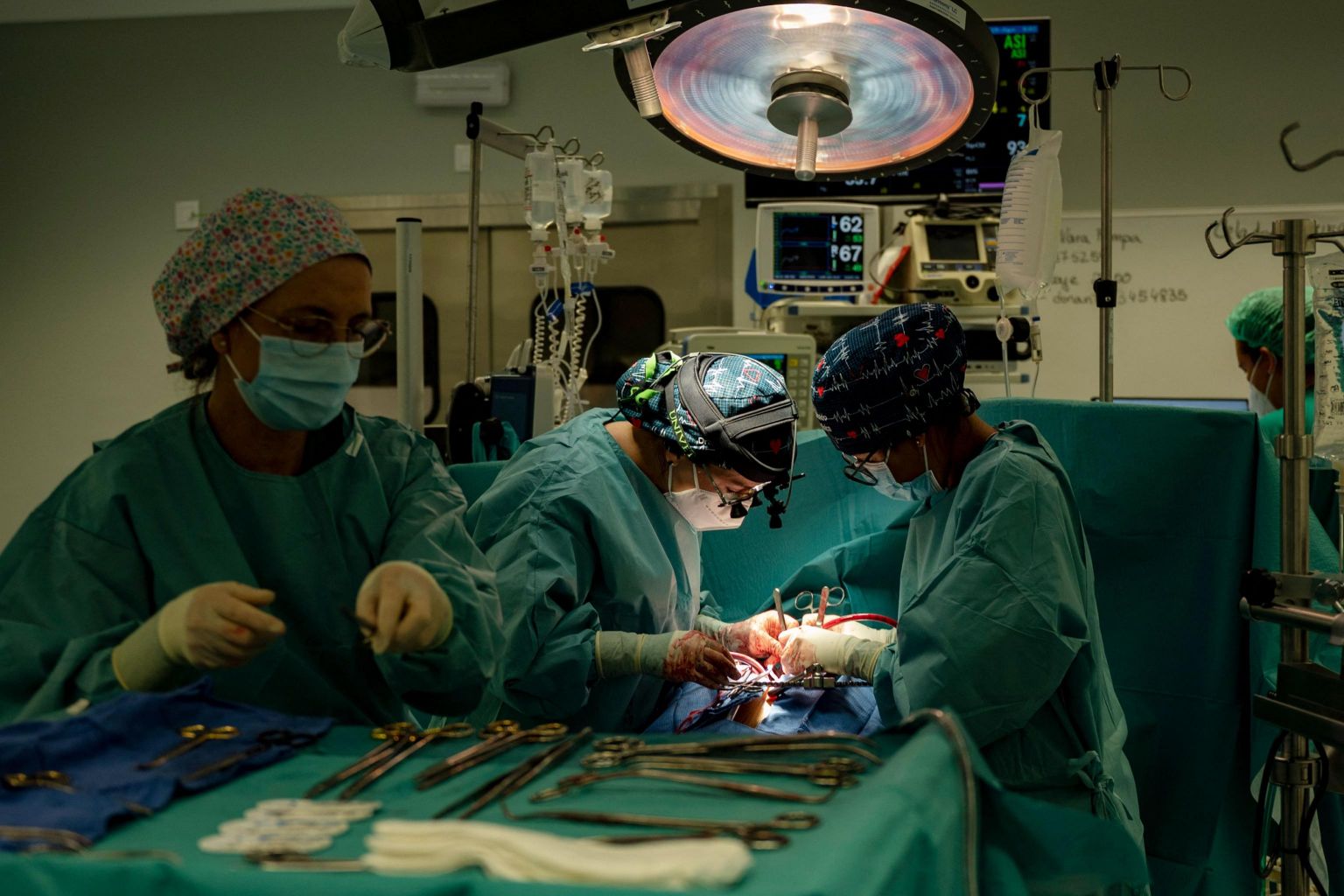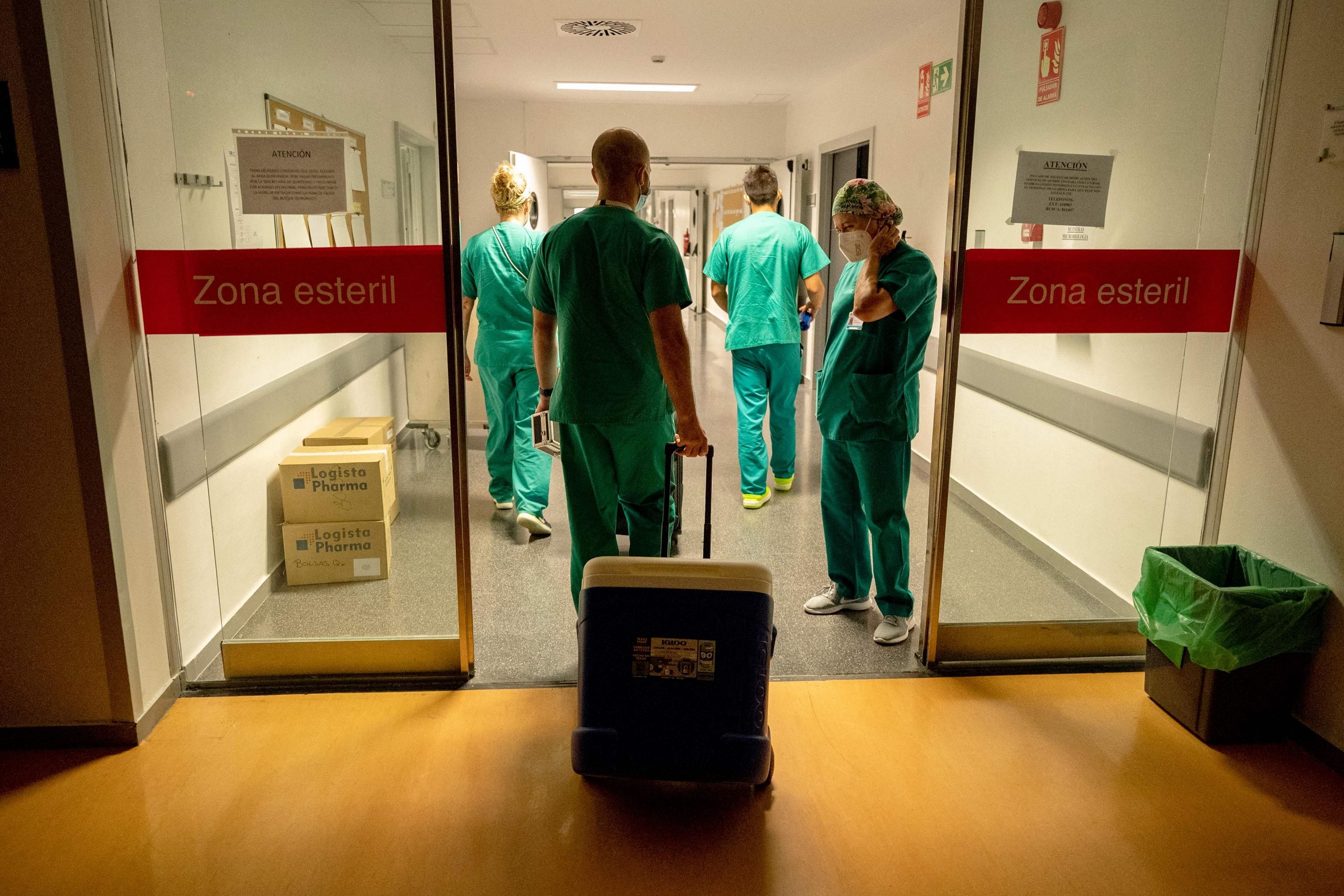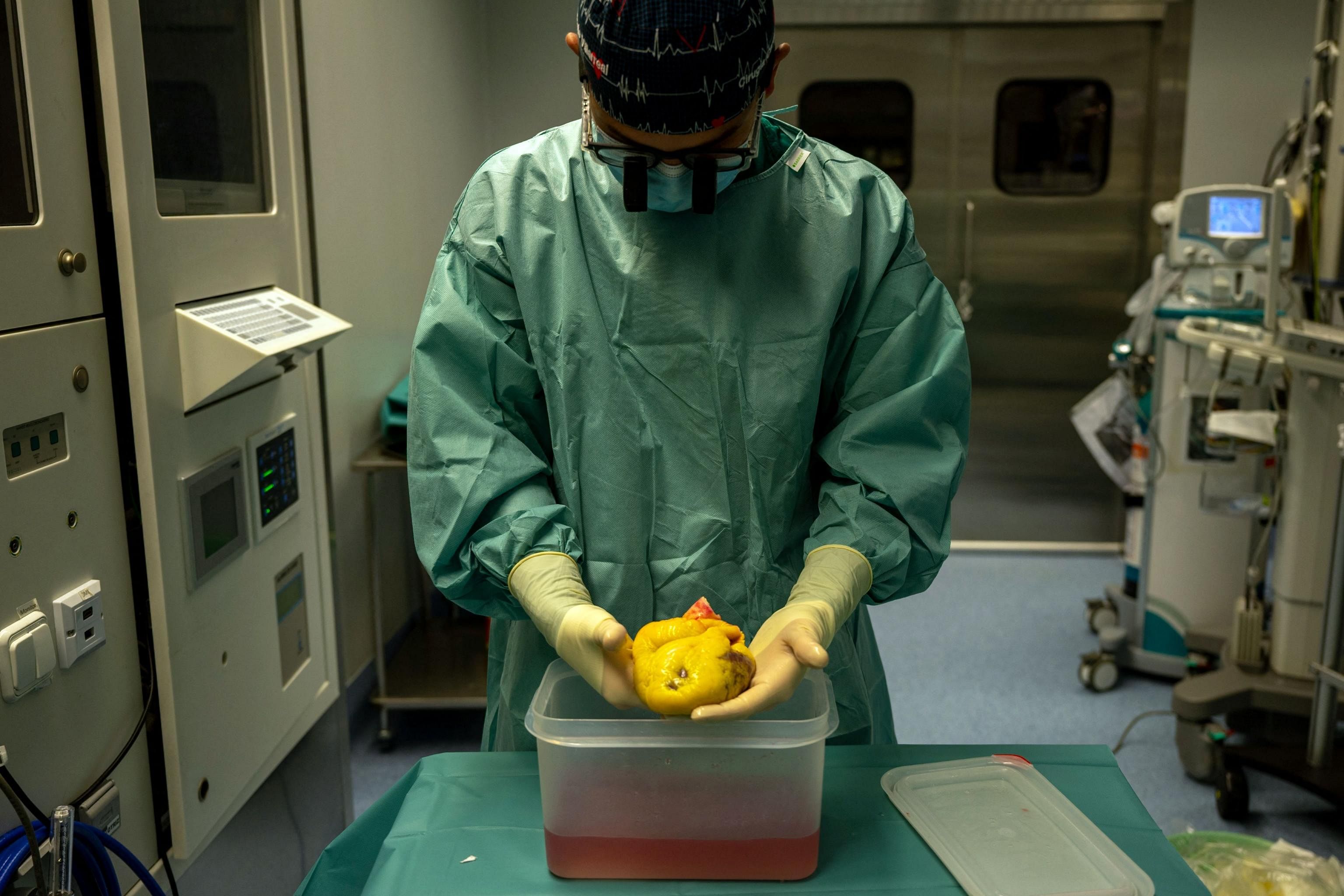For transplants, Covid-19 complicates the race against time
Sign up now: Get ST's newsletters delivered to your inbox

With Covid-19 patients filling ICUs, the number of transplant procedures in Spain fell by 20 per cent last year.
PHOTO: AFP
Follow topic:
MAJADAHONDA, SPAIN (AFP) - Its blue lights flashing, the ambulance races along the Madrid ring road towards the airport, the words "organ donation" clearly marked on its side, cars pulling over to let it pass.
A transplant team is on its way to retrieve a person's heart, which will be used to save the life of another patient who is already on standby.
With the coronavirus pandemic throwing up a barrage of challenges for Spain's world-leading organ transplant experts, the recipient is one of the lucky ones.
Last year, the number of such time-critical procedures slowed dramatically as intensive care units (ICUs) collapsed around the country.
Waiting on the tarmac at Madrid's Barajas airport is a private jet, its pilot sitting at the controls as three medics in green scrubs hurry to board, one pulling an empty blue cooler on wheels. Under Spanish law, the location of the donor must remain confidential.
"What the pandemic has changed is the number of transplants," said Ms Erika Martinez, 41, a specialist nurse on board the plane who has been involved in some 450 transplants. "The main problem, especially during the first wave, was the collapse of ICUs across all hospitals."
With cases of Covid-19 spiralling across the country, ICUs - which are critical for transplant surgery - were suddenly overwhelmed with an unprecedented number of critically ill patients. "Donors are always identified in intensive care units," explained Dr Beatriz Dominguez-Gil, director-general of the Spanish National Transplant Organisation (ONT).
There, they are kept alive artificially, waiting for the organs to be taken out. And it is also where patients who have received an organ "have to spend at least the first few days after the transplant", she said.
As a result, with Covid-19 patients filling ICUs, the number of such procedures fell by 20 per cent last year. But even then, Spain maintained higher numbers than other countries had before the pandemic, with 37.4 donors per million residents in 2020 compared with 29.4 in France and 36.1 in the United States in 2019.
And it retained its status as world leader, carrying out 5 per cent of all transplants worldwide, even though it only represents 0.6 per cent of the global population.
Ms Amparo Curt is one of those who went through the complex procedure at the height of the first wave. Last year in March, she was placed on a waiting list for an urgent transplant after developing autoimmune hepatitis, giving her "just days" to live.
She recalled her anxiety. "You realise you're going to die. And you wonder: What organ are they going to be able to find in the middle of the Covid-19 pandemic?" the 51-year-old told AFP, her voice breaking as she related the story.
But by "miracle", they called her in several days later to receive a new liver. And five days later, she was back home, feeling "grateful to be alive".

A medical staff pulls a portable fridge containing a donor's heart to be implanted in a patient at Puerta de Hierro University Hospital in Majadahonda, Spain.
PHOTO: AFP
Up in the air, 28-year-old surgeon Juan Esteban de Villarreal does not know if the heart extraction he is on his way to perform will succeed. At Puerta de Hierro hospital in Majadahonda just outside Madrid, a patient is hoping against hope that it will, anxiously waiting for the life-changing donation.
Three-quarters of organs are transported by commercial airlines, which carry them free of charge, but those that cannot wait are flown in a private jet. After landing, the team quickly boards another ambulance, racing to a hospital where the donor lies on an operating table, machines beeping constantly.
Approaching the donor, whose rib cage is open, Dr Esteban de Villarreal delicately palpates the still-beating heart. After several minutes, he steps back and goes to make a phone call.
"I would say yes, it's working well," he said, giving the green light for an extraction. Once removed, the heart is put into a simple plastic container filled with serum and placed inside three hermetically sealed bags.
"Air is bad for it," he explained as the precious cargo is placed into a refrigerated container and whisked back to the plane with the medics, who are soon wheels up again for Madrid.

Mr Juan Esteban de Villarreal prepares a donor's heart to be implanted in a patient, at an operating theatre in Puerta de Hierro University Hospital in Majadahonda, Spain.
PHOTO: AFP
After landing, the ambulance races them to the hospital in Majadahonda and after another change of clothes, the surgeon heads to the operating theatre where the patient's rib cage is already open.
Walking in, he removes the damaged organ, replacing it with the new heart. Within hours, the tubes are removed and the heart starts a new life inside its new owner.

